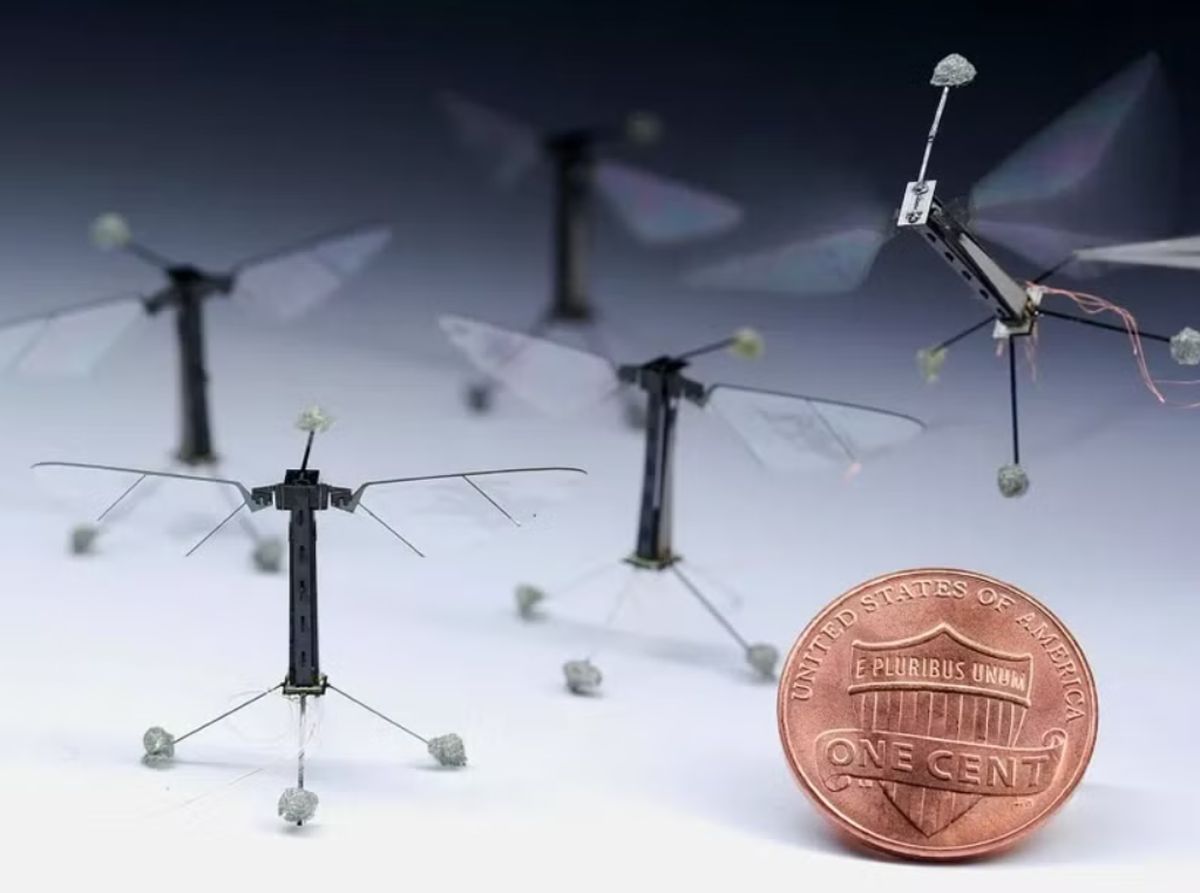You may have heard of “nano” robots, but what about microrobots? These robots are built on the scale of insects, rather than cells or bacteria, and they are likely to play an important role in our lives throughout this century. While their benefits are often touted, the potential for their misuse is frightening.
Big robots are the center of attention, but what about the small ones?
Large, human-scale robots have garnered most of the attention. However, insect-scale robots promise to be more useful and have a much greater impact than a dog-sized robot. Think of all the places small animals like rats and cockroaches can get into. Small robots present more opportunities, but also a much greater threat.
Microrobots, or microbots, are tiny machines capable of performing tasks autonomously or semi-autonomously. Typically measuring just a few millimeters, and in some cases even micrometers, these diminutive robots are constructed from various materials, including metals, polymers, and biological molecules like DNA. Their mobility and precision allow them to execute intricate maneuvers in confined spaces, making them suitable for applications across medicine, manufacturing, and environmental solutions. Some microbots respond to external stimuli such as light, heat, or magnetic fields, while others are powered by minuscule onboard energy sources. Notably, their ability to communicate and interact enables them to function collectively in swarms.
Biomimicry, drawing inspiration from nature to build small machines
Building a large robot is relatively easy. In fact, you’ll find that early prototype robots tend to be massive compared to the versions that come later. For one thing, they’re easier to work on compared to a final production model, where every cubic inch is packed with technology, but there are limits to how small we can make the motors, joints, and other bits you need to make a robot work and be useful.
That’s one of the biggest challenges in microrobotics. How do you make legs that are just a few millimeters long? How do you make wings that are a centimeter long? Scientists and engineers in many different fields have been working for decades to solve some of these problems, and much of this progress has been driven by biomimetics. Biomimetics is an approach where we look to nature to get an idea of how to solve a problem that natural selection has already dealt with for billions of years. Scientists take inspiration from nature and then translate it into mechanical form.
Say hello to RoboBee, HAMR-Jr
Insect-sized robots have been around for a long time, like Robobee. This project dates back to around 2013 and aims to make the equivalent of a real bee. Using materials with special properties and tiny hinges and folds, Robobee took to the skies. Back then, it had to be tethered. In 2019, the bee finally didn’t need a tether and achieved untethered flight.
Today, there are many robots in development at places like MIT that use similar technology.
Then there’s HAMR-JR, HAMR’s smaller successor: the Harvard Ambulatory Microrobot. The HAMR family of robots was inspired by the cockroach, which, no matter what you think of it, is an absolutely phenomenal design that could be copied. HAMR-JR is agile and fast, yet about the size of a dime. It therefore has great potential to serve as a platform for future microrobots.
Microbots that get into your body
Then there are microrobots that are designed to get into your body, like the Bionaut. The small robot is injected via a needle and then externally guided inside your body to reach a specific location and release its payload. For example, it can be guided to a tumor and then release anti-cancer drugs in that area without affecting the rest of your body. The guidance is pre-planned and automated using precise magnetic manipulation. Then, when the job is done, the Bionaut returns to the site where it was injected so it can be removed. With the current goal of depopulation of humanity, can you imagine robots that dispose of your body?
The Bionaut is still in its very early stages. But that doesn’t mean the technology is no longer in use. Nanobots have been found in human blood and what’s more, they communicate with each other and can perform various tasks there. All without our knowledge, they can change a number of processes in the body, including our thinking.
Microbots can come in swarms
A microbot the size of an insect seems harmless, but imagine attacking in swarms. A single microbot can be the equivalent of a mosquito that doesn’t suck your blood, but instead secretes toxic substances, a vaccine or perhaps a load of nanobots into you. Scientists often cite climate monitoring or controlling places where dangerous conditions are as practical uses. But everyone probably realizes that the possibilities for misuse are enormous. If you’ve watched the movie Terminator, you might be terrified by the idea of large killer robots. In reality, deadly robots can be miniature in size, they can sneak up on you, attack you and you won’t even notice them.
Make no mistake, big robots will have a big impact this century, but we would be foolish to forget that the things that change the world can be very small.
Image: Kevin Ma a Pakong Chirarattanonon, Robert Wood Laboratory




